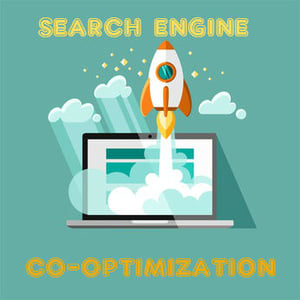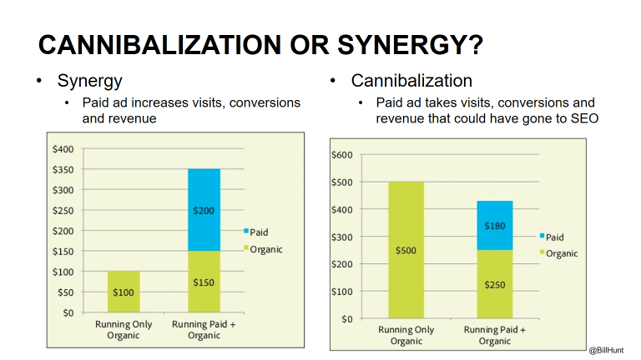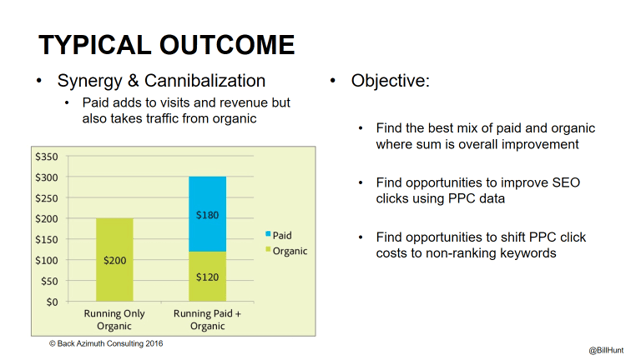 Search Engine Optimization (SEO) is a constant preoccupation of the online literati and given its importance in driving the internet, it is essential to keep up to date with the latest trends and concerns. The new Holy Grail of SEO is Search Engine Co-Optimization (SEC-O), promising huge rewards for combined organic and paid search. SEO guidelines and statements are regularly issued by the owners themselves, Google, Bing and their brethren. The debates, reactions and pontifications can be lively as researchers, practitioners and non-believers, exchange their opinions. ClickZ conferences are a great well-informed forum, and the recent New York event was no exception. Amongst the many soothsayers, Bill Hunt, President of Back Azimuth Consulting added his weight to the SEC-O debate “integrating, measuring, and optimizing PPC and SEO keyword data and insights to maximize their collective potential for traffic and conversions”. A bit of a mouth-full but worth unpicking.
Search Engine Optimization (SEO) is a constant preoccupation of the online literati and given its importance in driving the internet, it is essential to keep up to date with the latest trends and concerns. The new Holy Grail of SEO is Search Engine Co-Optimization (SEC-O), promising huge rewards for combined organic and paid search. SEO guidelines and statements are regularly issued by the owners themselves, Google, Bing and their brethren. The debates, reactions and pontifications can be lively as researchers, practitioners and non-believers, exchange their opinions. ClickZ conferences are a great well-informed forum, and the recent New York event was no exception. Amongst the many soothsayers, Bill Hunt, President of Back Azimuth Consulting added his weight to the SEC-O debate “integrating, measuring, and optimizing PPC and SEO keyword data and insights to maximize their collective potential for traffic and conversions”. A bit of a mouth-full but worth unpicking.
Definitions of organic SEO abound but let’s go with: “processes to obtain a natural placement on organic search engine results pages (SERPs). Some examples of techniques used for organic SEO include using keywords and keyword analysis, backlinking, link building to improve link popularity and writing content relevant for human readers”. Jumping straight to the global search engine leader, Google shares SEO information, helpfully requiring us to follow their guidelines which are categorized into three sections: webmaster, content and quality. The 1st section includes a 32 page ‘Welcome to Google's Search Engine Optimization Starter Guide’. A great place to start before going online and Googling ‘seo help’ and being bombarded. As Bill aptly puts it, the daily fare of the organic SEO practitioners of integrating, measuring, and optimizing are minutely measured by the traffic and conversion rankings that they achieve. The cost to the company, whether employing in-house experts or using agencies, is their not inconsiderable salaries, overhead costs and agency fees. But beyond mastering the organic SEO online trade it is time to move on and up!
 Paid search, including labels like Pay Per Click (PPC) and Search Engine Marketing (SEM), all ultimately describe the complex processes of delivering website traffic by purchasing ads on search engines. And surprise! Google Adwords is by most measures, the market leader followed by Bing Ads, which also delivers for Yahoo. We will save for another time the numerous other paid search platforms often referred to as the 2nd tier (Yelp, Geo-fencing…) and social networks (Twitter, YouTube, Facebook, LinkedIn etc.) and sales (Amazon, ebay…). The growing multitude of PPC platforms adds to the size and complexity of this burgeoning industry. Getting to grips with the platforms and programs requires expertise and resources that can be too daunting for many mid-cap companies, and that is before even spending money on the ads themselves. In the US alone this ad business is valued at $50 billion (see table below) growing at >35% p.a. The same SEO challenges apply to paid search teams, namely of integrating, measuring, and optimizing to deliver the level of traffic and conversion that is then measured as Return on Ad Spend (ROAS). ROAS is at least clearly definable: the directly attributable PPC revenue less the direct PPC cost, divided by that PPC cost. In this part of the SEO business, the company pays the ad costs as well as indirect costs, the salaries, overheads and agency fees. It starts getting pretty expensive to be in this game. Now add the extra layer of co-optimizing organic SEO and paid SEO.
Paid search, including labels like Pay Per Click (PPC) and Search Engine Marketing (SEM), all ultimately describe the complex processes of delivering website traffic by purchasing ads on search engines. And surprise! Google Adwords is by most measures, the market leader followed by Bing Ads, which also delivers for Yahoo. We will save for another time the numerous other paid search platforms often referred to as the 2nd tier (Yelp, Geo-fencing…) and social networks (Twitter, YouTube, Facebook, LinkedIn etc.) and sales (Amazon, ebay…). The growing multitude of PPC platforms adds to the size and complexity of this burgeoning industry. Getting to grips with the platforms and programs requires expertise and resources that can be too daunting for many mid-cap companies, and that is before even spending money on the ads themselves. In the US alone this ad business is valued at $50 billion (see table below) growing at >35% p.a. The same SEO challenges apply to paid search teams, namely of integrating, measuring, and optimizing to deliver the level of traffic and conversion that is then measured as Return on Ad Spend (ROAS). ROAS is at least clearly definable: the directly attributable PPC revenue less the direct PPC cost, divided by that PPC cost. In this part of the SEO business, the company pays the ad costs as well as indirect costs, the salaries, overheads and agency fees. It starts getting pretty expensive to be in this game. Now add the extra layer of co-optimizing organic SEO and paid SEO.
So there we have it: SEO and PPC are both costly, specialized, sophisticated online search engine business practices. Each requires specific technical and computational skill sets with the objective of delivering traffic and conversions which are meant to drive that existential business objective, top line sales growth. Now moving back in Bill’s direction and breaking down any silos between search engines and platforms, involves investing in both SEO and PPC, to achieve optimal SEO and optimal PPC programs, namely co-optimization, for your company. If you want to get down in those thick and tricky weeds, try Bill’s informative and pragmatic page. I recommend stepping back and taking the time and effort for a good dive into the material, although it is not for the faint hearted, nor for those with small budgets. Nevertheless, for all businesses faced with the SEO challenge, and today that means every business, having an understanding of the SEO mechanics and platforms, enables a marketing optimization at level one (organic SEO) or level two (paid SEO) or even the third co-optimization Holy Grail level (organic and paid SEO together).




